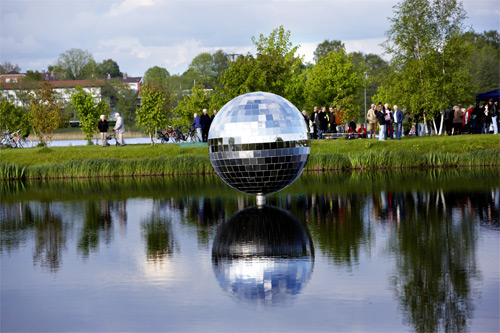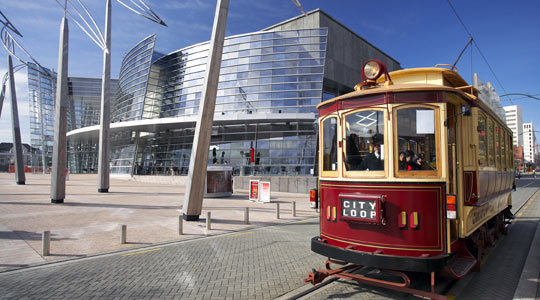 Last week, I was privileged enough to attend the Rotorua Lakes Symposium in Rotorua City. This symposium, themed “Fix a lake and grow a city”, brought together scientists, politicians, natural resource managers, landscape architects, academics, tangata whenua, business people and many others to explore ways in which the lakes of Rotorua can be restored to create wealth and wellbeing in the Rotorua district.
Last week, I was privileged enough to attend the Rotorua Lakes Symposium in Rotorua City. This symposium, themed “Fix a lake and grow a city”, brought together scientists, politicians, natural resource managers, landscape architects, academics, tangata whenua, business people and many others to explore ways in which the lakes of Rotorua can be restored to create wealth and wellbeing in the Rotorua district.
The quality of the presentations was excellent, particularly given that this symposium was organised by a society run entirely by volunteers (the Lakes Water Quality Society). However, one of the highlights for me was a presentation by Bo Frank, Mayor of the small Swedish city of Växjö [click here to view location].
Mayor Frank outlined how, through visionary leadership, broad-based political cooperation, and within the wider European Union imperative for improved sustainability in energy and resource use throughout the EU, the city of Växjö has positioned itself not just to be a “green city”, but the “Greenest City in Europe”. It has done this by setting, and going a substantial way towards achieving, ambitious targets for lowering its per capita carbon emissions through the promotion of energy-efficient housing and buildings, the establishment of bio-energy and bio-gas generation facilities and integrated transportation systems. And, of most immediate relevance to the symposium, it has invested heavily in the restoration of the City’s degraded lakes – thereby transforming a negative legacy of past environmental degradation into an opportunity to maximise the biodiversity, recreational, economic and spiritual value of the lakes.
 Despite the symposium’s geographical focus on Rotorua, I found my mind turning to my former home of eight years, Christchurch [See: Christchurch – a city haunted by its environmental past?]. Christchurch has already made significant strides towards making a name for itself as an “eco-city”, establishing a ground-breaking bio-fuel generation plant to transform algae on the city’s sewerage ponds into fuel, as well as numerous other sustainability initiatives. But it seems to me that the devastation wrought by February’s earthquake and the imperative to rethink city planning and design could be an opportunity to create a city that other cities – both in New Zealand and around the world – derive inspiration from and model themselves on.
Despite the symposium’s geographical focus on Rotorua, I found my mind turning to my former home of eight years, Christchurch [See: Christchurch – a city haunted by its environmental past?]. Christchurch has already made significant strides towards making a name for itself as an “eco-city”, establishing a ground-breaking bio-fuel generation plant to transform algae on the city’s sewerage ponds into fuel, as well as numerous other sustainability initiatives. But it seems to me that the devastation wrought by February’s earthquake and the imperative to rethink city planning and design could be an opportunity to create a city that other cities – both in New Zealand and around the world – derive inspiration from and model themselves on.
One of the other presentations at the symposium was from Hugh Morris, a civil engineer who is part of a team which has developed and applied techniques to create earthquake-resistant timber structures for large multi-story buildings. These timber structures have the potential to be used extensively to create attractive and resilient new buildings for a forward-looking Christchurch City.
With the political cooperation and commitment, vision and leadership demonstrated in Växjö, as well as the kind of innovation that New Zealand produces in great abundance, the emergence of Christchurch as the “Greenest City” of Australasia – or even the Southern Hemisphere – not only seems entirely possible, but to me at least, compelling. Through the synergy of vision and innovation, environmental history of the future could made in Christchurch.
See also: Christchurch – a city haunted by its environmental past?; envirohistory NZ podcast: episode 5 out now
Photo top left: the “spegelbollen” (“mirror ball”) in one of Växjö City’s lakes. Public art is valued very highly in the city, and there are annual competitions to select a new sculpture for the City. Above right: the famous Christchurch tram passing the Christchurch City Art Gallery. This synthesis of old and new has been a strength of the city to date.

That would be truly awesome, but with the current gov’t (both at the national and local leve) there’s not one hope in hell
Thanks for your comment Gaby – in fact, that is what makes the Vaxjo story so interesting. Mayor Frank, who has been one of the key leaders and visionaries in transforming the city into the “Greenest City in Europe”, is actually a long-time Conservative Party member (to run for local government in Sweden you have to belong to a political party). However, he, along with his colleagues, managed to get complete consensus across the entire political spectrum for the city’s environmental goals. That broad political consensus has been key to the city’s success in achieving these goals. I think there is something we can learn from that.
This so appropriate for Levin and our two lakes. I will bring to the attention of various people active in the campaign to clean up our water.
I tried to start a discussion along these lines on a group in LinkedIn recently (at http://lnkd.in/hhUYKR ).
I also think that in this disaster are the seeds of opportunity and that green sustainable leadership and planning are needed. Christchurch (and NZ) really does have an opportunity to lead the world and show everyone else how sustainable communities (towns/cities/country) can be developed.
As already commented, countries and the world are finding it almost impossible to lead, but some visionary cities are leading the way.
Good on you for spreading the word and the good ideas. Any idea if the material from the symposium is available online?
Thanks Alan – interesting discussion – I especially like the elevated garden city idea: http://www.elevatedgardencity.com
I am pretty certain that the proceedings of the symposium will be available in some form. I will contact the symposium organisers to get the details.
Discussion got a bit sidetracked, but worth pursuing… There is, of course, lots of interest worldwide on greening our cities… our of necessity of course. It’s a shame that in NZ we seem to just follow the mistakes that everyone else has made, rather than learning from them.
Some other links that might be of interest that I came across recently:
http://www.sed.manchester.ac.uk/architecture/research/csud/workingpapers/
and
http://www.wmin.ac.uk/sabe/page-1546
Exploration Architecture has some very interesting projects (the Sahara Forest project amongst them) – have a look at:
http://www.exploration-architecture.com
and
http://www.exploration-architecture.com/section.php?xSec=33
There’s a great deal that can be done by integrating new technology with natural materials (eg. replacing some old style building methods with tech-enhancements – think wood combined with lightweight + extremely strong carbon fibre etc instead of concrete/steel combos).
Keep up the good work! 🙂
Alan – Ann, who organised the symposium, has advised that the proceedings will be available in hardcopy form in a few months. Message from Ann: They are $60 which includes GST and postage, so that really is only covering printing and postage costs, so we believe extremely reasonable and they are of high standard. Anyone interested will need to contact me at our Symposium address symposium@lakeswaterquality.co.nz
For all those readers in or near Christchurch, there is going to be an expo on May 14th and 15th, organised by Christchurch City Council, to enable Christchurch people to input into a vision for the rebuilding of the central city: http://rebuildchristchurch.co.nz/community-expo-to-start-sharing
I am so excited to read all this and excited for Christchurch and its future. and hopefully this will spill over into other cities like Hamilton who has got a problem with anything environmental.
Thanks for your feedback, Siggi. This sort of environmental transformation is made possible because there are people with your kind of passion and enthusiasm!
This is a very interesting article in light of the new Christchurch City draft plan. The plan focuses a lot on the development of a new identity for Christchurch based upon environmental sustainability. A very large number of the original submissions earlier this year saw people asking for a greener city also. It now seems very likely that this is going to be the future for Christchurch.